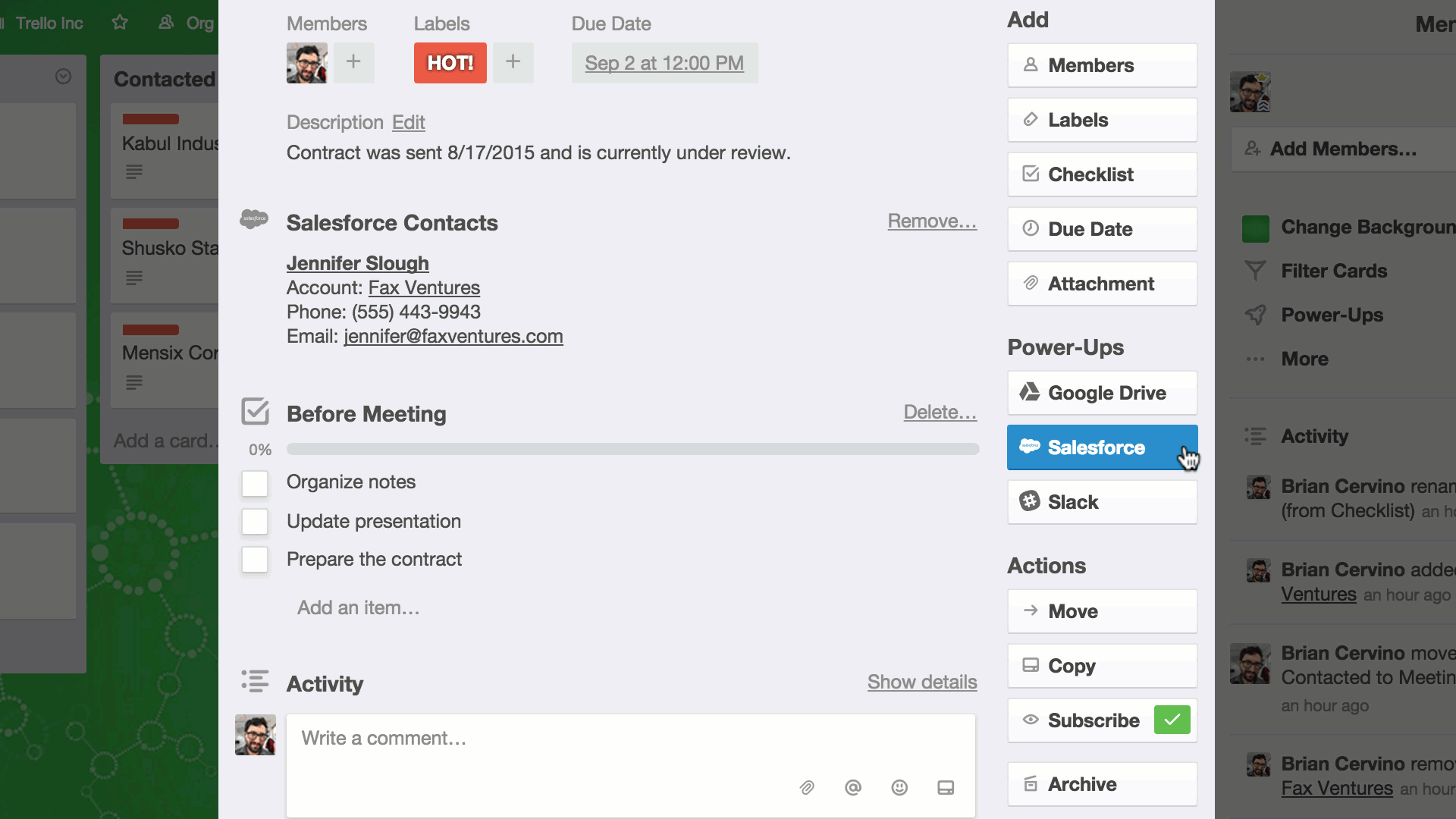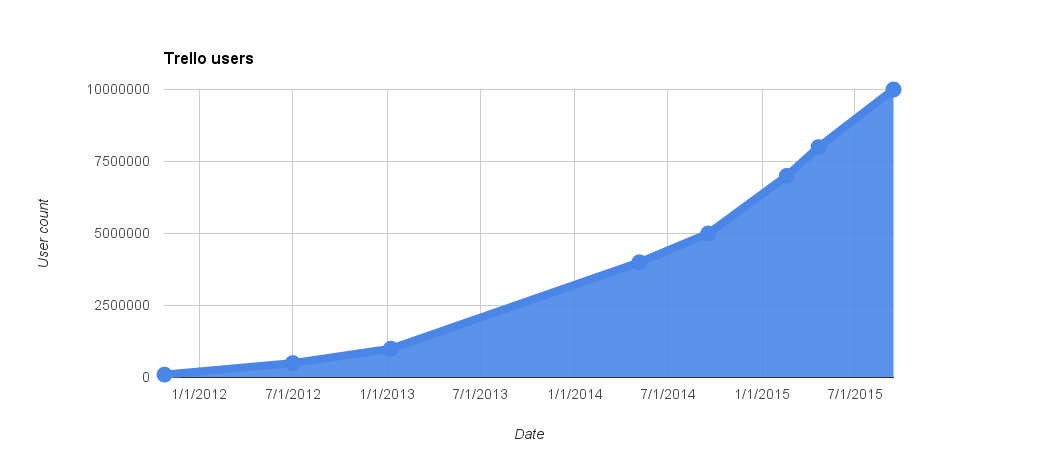Task management app Trello today announced that it now has more than 10 million users. That’s up from 8 million in April.
Trello today is also introducing new features for its Business Class premium tier of service. Now users can natively integrate many online services, including Box, Dropbox, Evernote, GitHub (integrate pull requests, commits, and issues), Google Hangouts, MailChimp, Salesforce (drop in leads, contacts, and opportunities), Slack (send Trello cards to Slack channels and get Slack reminders about Trello cards), and Twitter. You can now integrate entire folders of documents from Google Drive, too. (This builds on the existing capability to natively drop in individual files from Google Drive.)
“Now you can manage your workflow from start to finish using Trello, and get important information from other tools you’re using along the way,” Stella Garber, Trello’s vice president of marketing, wrote in a blog post on the news.
The new native integrations should make Trello feel like less of an isolated piece of software and more like a hub for all of a company’s critical activity. Team communication app Slack has lately been making it easier for other apps to integrate with it. The idea is to make Slack more of a virtual place for all employees to be during the workday, and Trello Business Class’s expansion feels like a reasonable response to that.
It’s been possible to integrate services manually, using tools like IFTTT and Zapier. Now Trello is bringing that sort of application integration in-house for paying users.
Several other to-do list apps are also available for individuals and teams. Wunderlist is one (parent company 6Wunderkinder was acquired by Microsoft earlier this year). There are plenty of others, including Asana and Wrike. But New York-based Trello, which spun out of Fog Creek Software last year with $10.3 million in venture capital funding, is clearly gaining traction.
Here’s a rough chart I made showing Trello’s user growth since 2012:
The new Trello Business Class costs $8.33 per user per month with an annual subscription. That’s up from $3.75 per user per month for an annual subscription of the existing service. Existing customers get discounts if they choose to upgrade, or they can opt to keep paying the same price for the same service. Now Trello Business Class comes with “Smart Billing,” which means that companies will only have to pay for active users and will receive credits for users who become inactive.
The tier now allows users to tag specific boards, monitor board activity, sort boards, and organize boards into new collections.
Trello Enterprise launched in July.
VentureBeat's mission is to be a digital town square for technical decision-makers to gain knowledge about transformative enterprise technology and transact. Learn More



